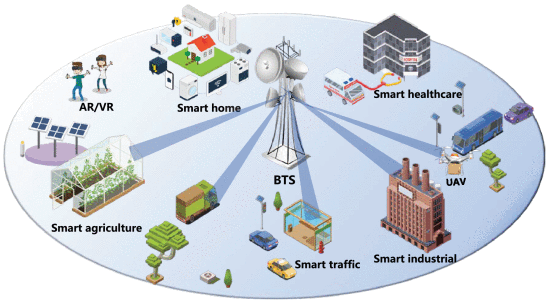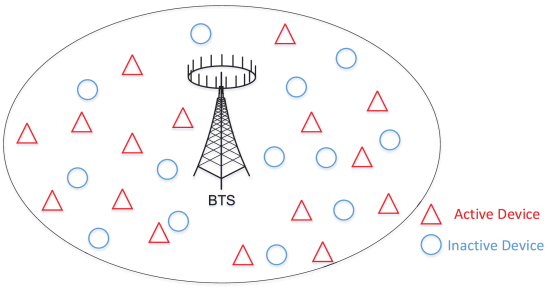The Internet of Things (IoT) holds tremendous potential to transform many aspects of the world—from industry and agriculture to medicine, traffic, and smart cities—making our lives easier, safer, more efficient, and more sustainable. As these applications grow, the number of IoT devices has exploded. According to the latest data, there are between 7 and 15 billion connected devices currently deployed around the world, and this total is expected to eventually reach the hundreds of billions. Such a staggering number of devices simply cannot function with existing wireless infrastructure.
Current commercial technologies like Zigbee, Bluetooth, and Wi-Fi work well enough for small networks—for example, a few hundred devices in a building. But to handle deployments across vast areas as well as densities of 1 million devices per km2—to serve a connected farm or enable autonomous vehicles to safely traverse crowded city streets—more robust communications methods are required.
The most promising method of unlocking the full potential of our connected future is cellular IoT: using fifth-generation (5G) and beyond 5G (B5G) wireless networks to enable massive machine-type communication (mMTC). Recently, a team of IEEE senior members and fellows conducted a comprehensive survey of massive access design, with a detailed review of theory, protocols, techniques, coverage, and security.

Cellular IoT based on B5G wireless networks will be applied in various fields, e.g., industry, agriculture, traffic, and medicine.
The paper is important, the researchers believe, because most of the current focus with wireless networks is on human-type communication (HTC), i.e., cell phone networks. “The next-generation wireless networks are expected to be dominated by mMTC,” said Xiaoming Chen, IEEE Senior Member, and professor at Zhejiang University in Hangzhou, China. “Different from HTC, mMTC has the unique characteristics of low power, massive connectivity, and broad coverage, which require new concepts, theories, and methods for the design of massive access.”
According to the researchers, most of the focus for massive access so far has been related to increasing the capacity of wireless networks to serve many HTC devices at the same time, such as boosting the cellular performance of a packed stadium or concert venue. IoT deployments, on the other hand, have different challenges. They are heterogeneous with a wide variety of quality of service (QoS) requirements depending on the application field; they generate much more sporadic traffic, with idle devices not accessing the network, leading to a random number of devices connecting in each time slot; they often have limited capabilities in terms of signal processing and energy storage; and some can impose stringent latency requirements to perform their desired operation.

Illustration of sporadic traffic of IoT applications. In general, during an arbitrary time slot, only a fraction of the devices has data to transmit, namely the active devices.
In the paper, the researchers explore in-depth a variety of new techniques—including grant-free random access, non-orthogonal multiple access, and low-earth-orbit (LEO) satellite communications—delving into the theory behind their operation and outlining how each can be applied to solving the problems of massive access today and in the future.
“We expect this paper to provide practical insights and guidelines to the researchers and designers to pave the way for the successful development of B5G wireless networks,” Chen said.

